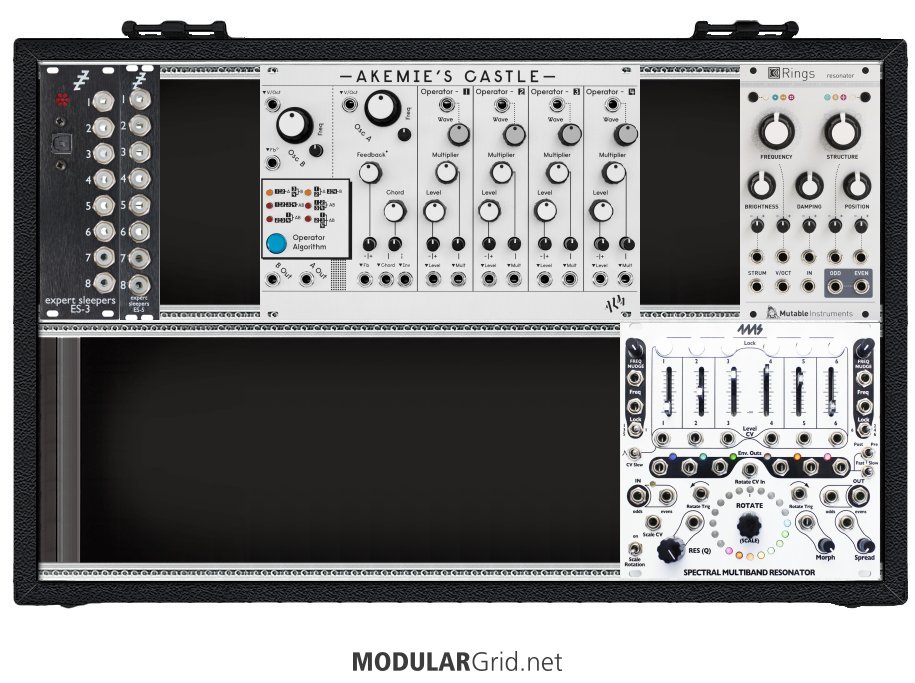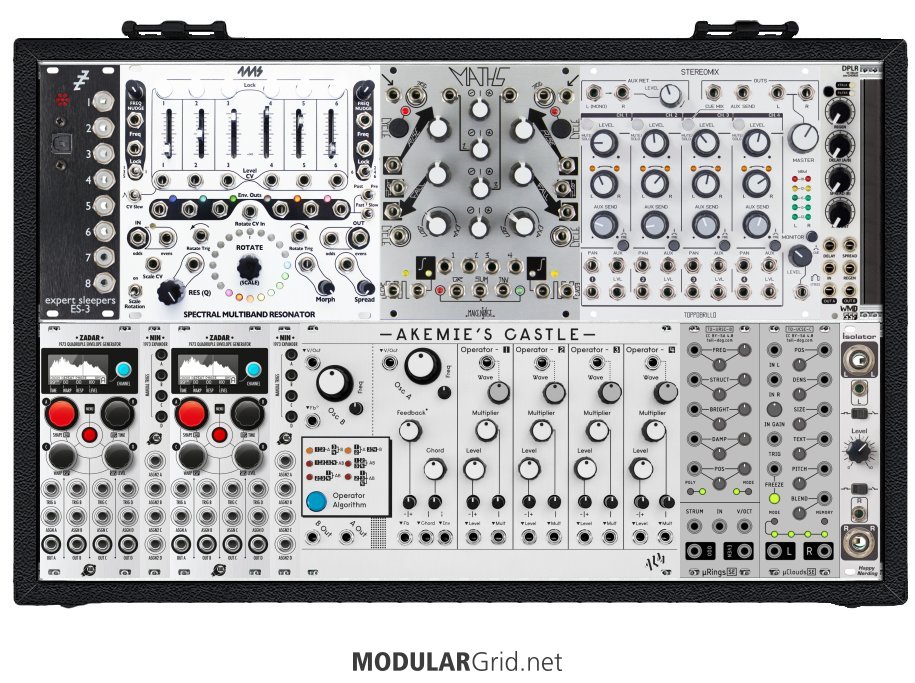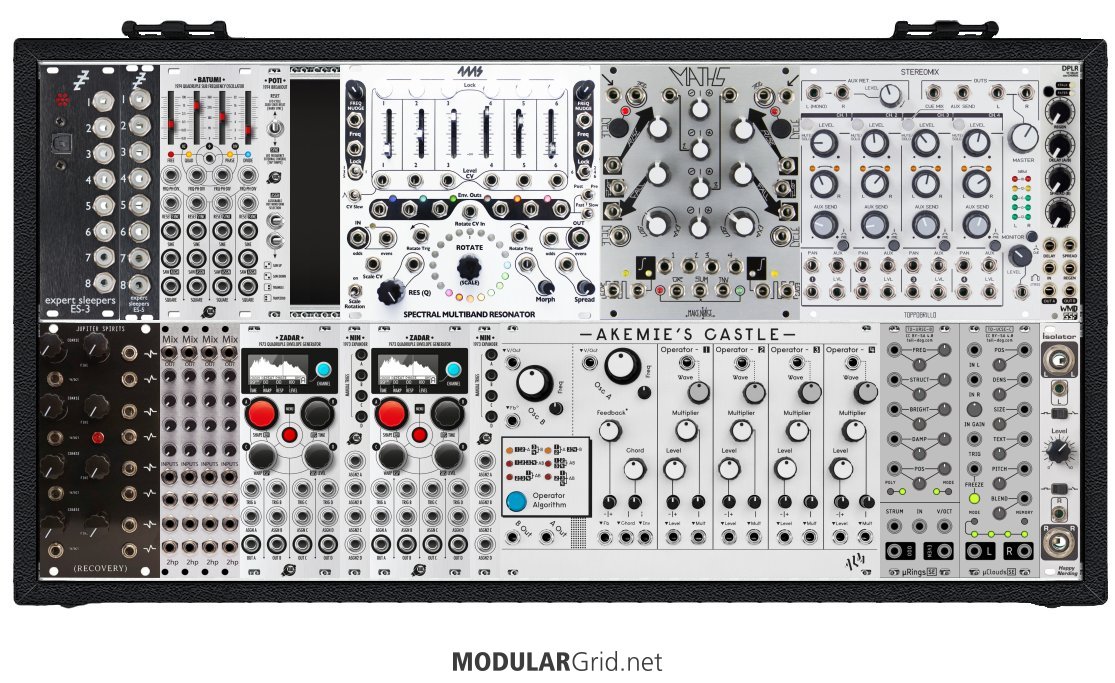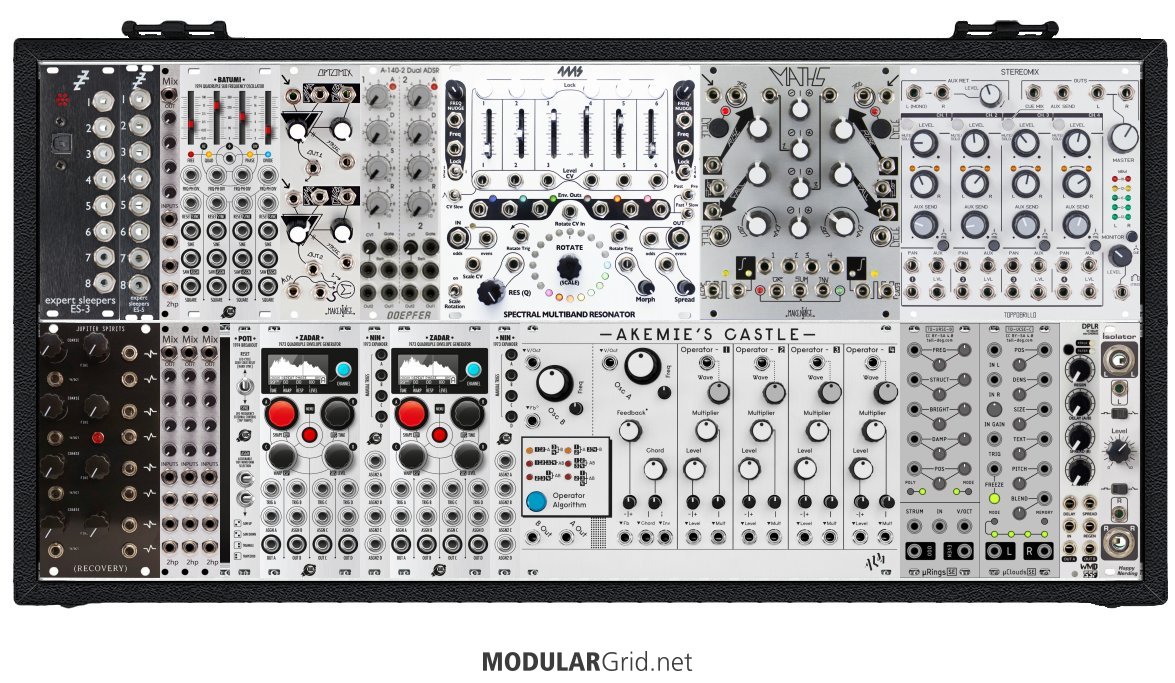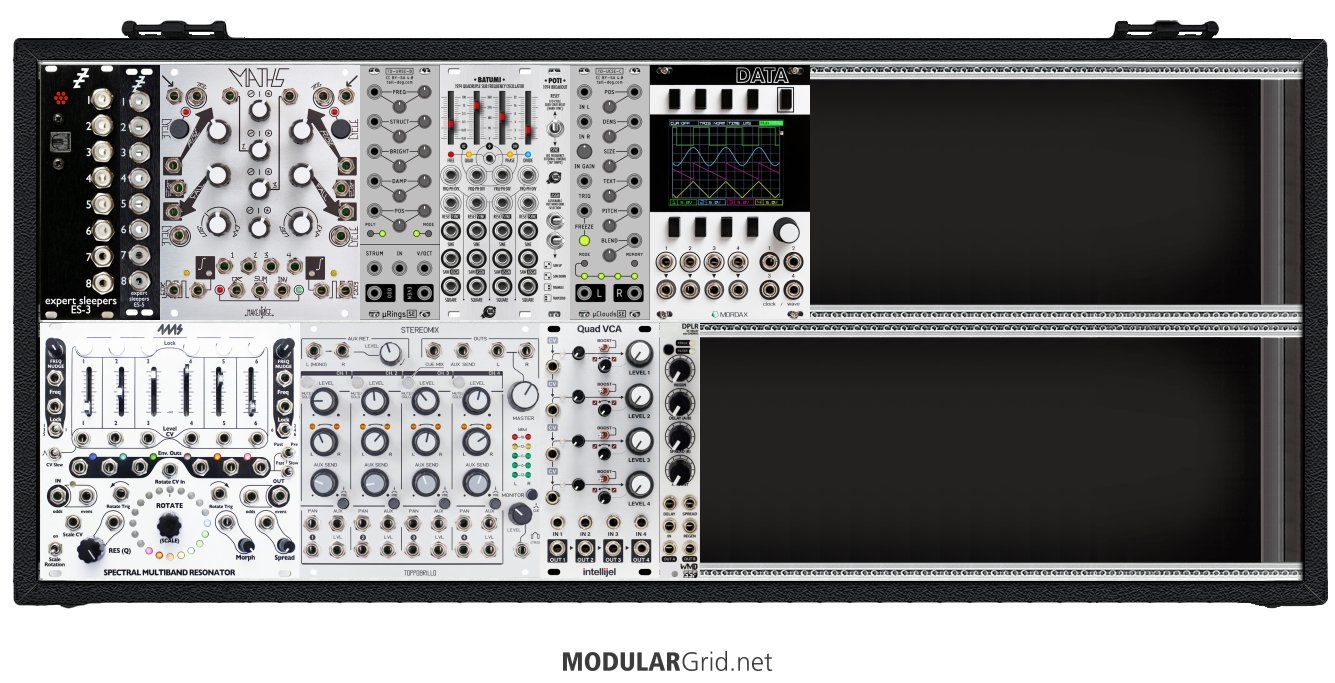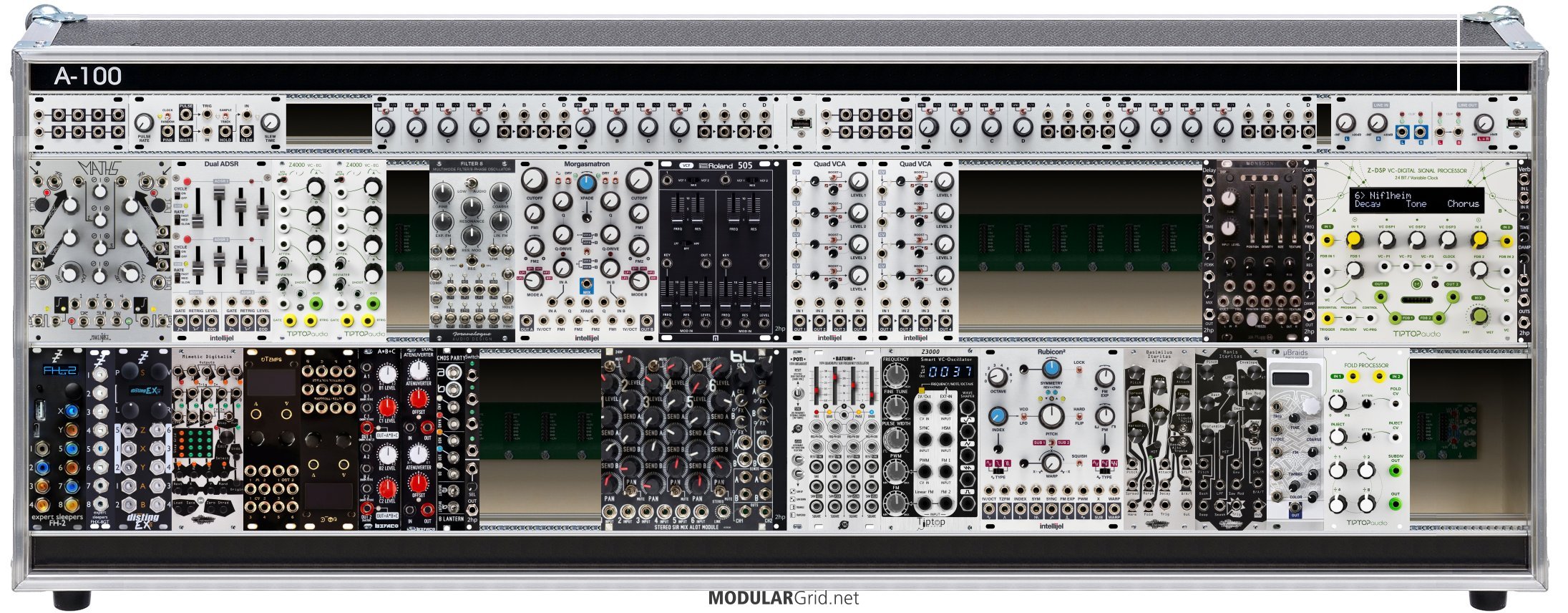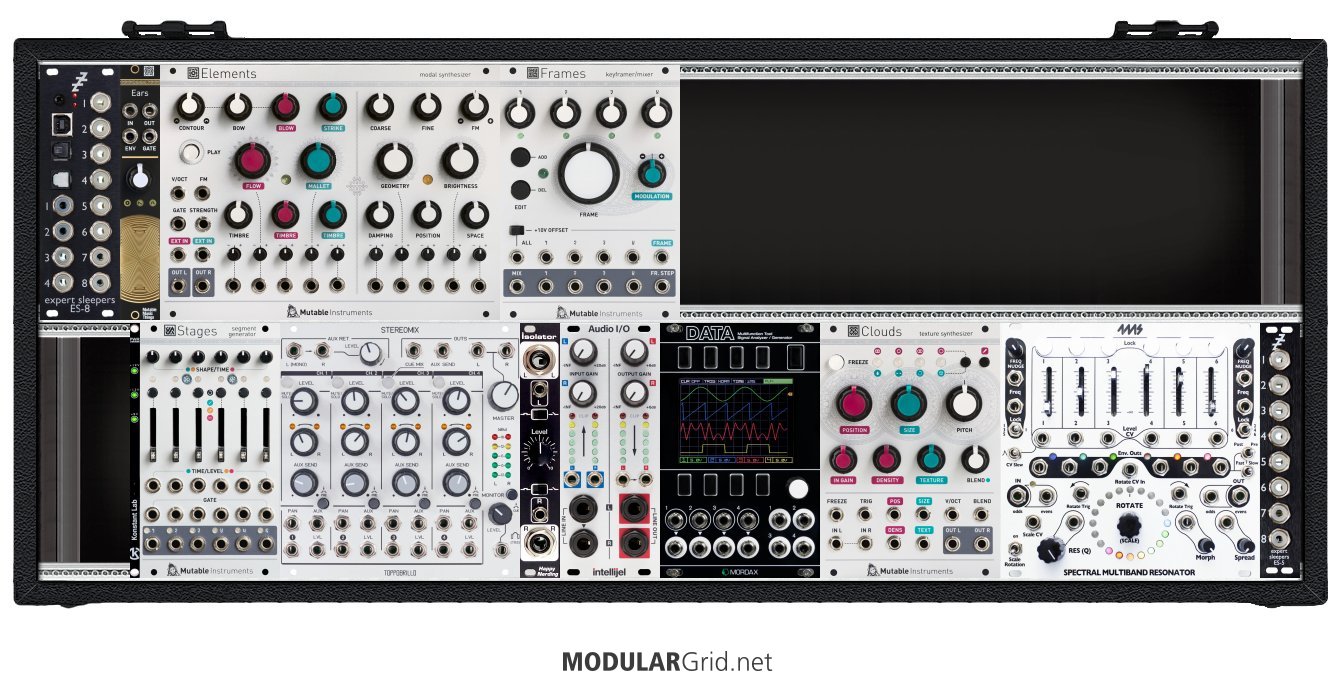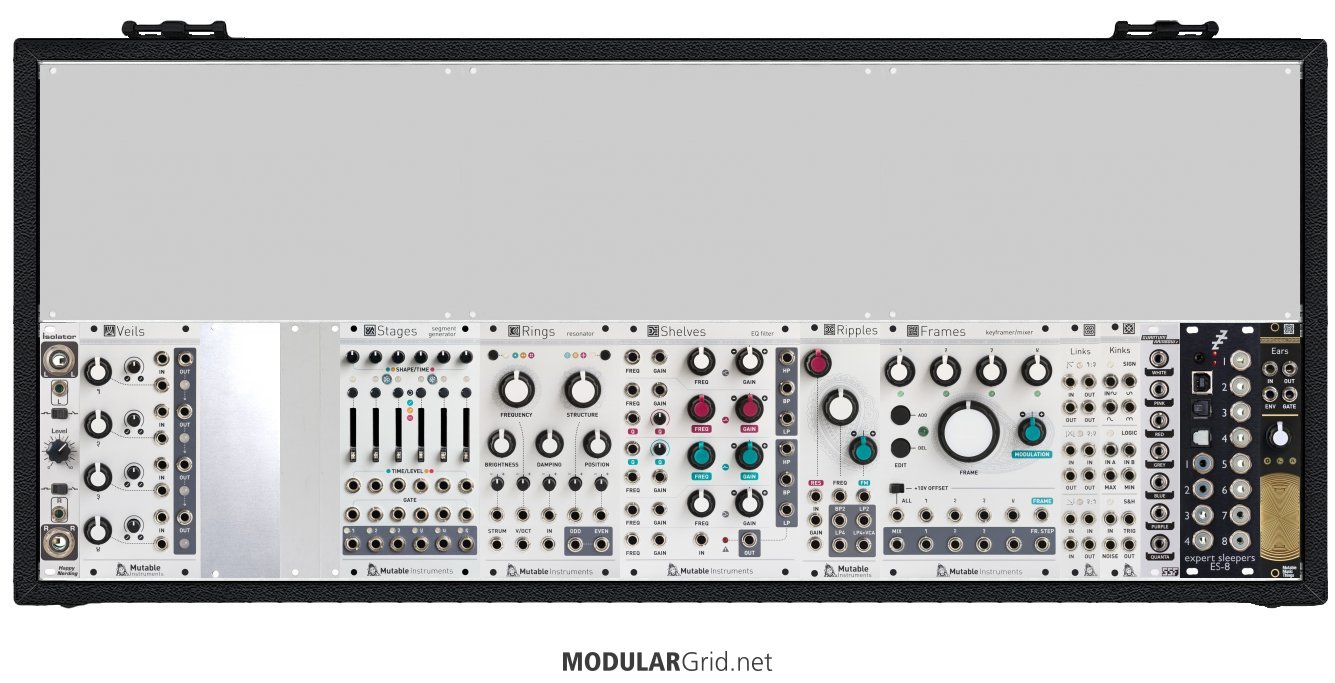Chowning FM really needs envelopes galore to be used properly. A pair of Xaoc Zadars with their Nin expanders would team up very well with that and not occupy loads of space. That would give you eight envelopes with full CV and memory storage in 26 hp. However, having a Maths for more modulation possibilities (such as with the SMR) is a very good idea. As for the SMR, yep, it's a very good stereo filter for pads, sort of like an amped-up version of the Korg PS-series triple resonator with loads more control.
As for granular modules, Tall Dog does an 8 hp version of the Mutable Clouds. Also, they do an 8 hp version of the Rings module as well, which would give you back 6 hp to use for something else.
Veils is a decent VCA mixer, but you save a bit by getting Intellijel's Quad VCA...essentially the same thing, $10 less. However, this would not make a decent output module, as you need to step your levels down to line level and, optimally, provide some isolation at the output to reduce noise and crud. In fact, given that both the Clouds clone and the SMR (and the Akemie's, for that matter) are full stereo, what you actually need is a stereo mixer...something with CV over levels, FX sends, and panning. Toppobrillo's Stereomix seems like a good choice, having all of those functions plus a few useful additions such as mutes. Now, with that, you would want to use the SMR then the Clouds clone after the Stereomix so that you can tamper with the sound of the summed pad. Plus, consider adding something for the Stereomix's AUX send/return that can add some stereo as well. One module that comes to mind here is SSF's DPLR, a mono-in stereo-out delay/chorus module, which you can use to fatten up pad sounds selectively and under CV control via the Stereomix's AUX level CVs. As for an output, have a look at Happy Nerding's Isolator, which gives you a ganged stereo level control, headphone amp, 1/4" TRS outs, and transformer isolation (which, I note, you can overdrive a bit to get some nice saturation) in only 4 hp. One argument for having a Quad VCA, though, would be that you don't have any other VCAs in this and those might come in easy for controlling both audio and CV levels as needed. Since you can break out VCAs from that as needed, that would take care of all of your individual VCA needs in this small a build.
As for other additions, I'd suggest some LFOs...Xaoc's Batumi is a pretty useful and space-saving quad LFO; adding its Poti expander would add a few more functions that you'd find handy. You can also swap the LFOs from this with the envelopes from the Zadar for a different control method over the Akemie's, although the Zadar can loop its envelopes. Adding a second poly-VCO might be useful as well...something analog such as Recovery's Jupiter Spirits paired with a couple of simple 4-1 mixers (such as 2hp's Mix) so that you can create a stereo mix out of the triangle and saw waveforms the poly VCO outputs. Perhaps pairing this with a MakeNoise Optomix would be a good idea, as that would allow you to have lowpass gates over this stereo voice for a different note attack sound against the Akemie's, or against the Jupiter Spirits if that makes sense for the patch you're working on. Note also that the Optomix will also need some very basic envelopes; the Doepfer A-140-2 gives you a pair of ADSRs in only 8 hp with CV over overall time.
As for one thing to avoid...try and make do without multiples here, as this build is going to be pretty tight. Instead, use stackcables or inline mults. Passive is fine; since the oscillators are all being fed direct from the ES-3, buffered mults aren't necessary.
Lastly, is this going into a powered case or do you need to add on a power inlet?


